#hemp cultivation india
Text
0 notes
Text
What Exactly Is Sannyo Smoking?

Well of course it sucks Mamizou, don't you remember what she said it's made of?

Now, an herb you can smoke that can grow on a mountain. The first, most obvious, initial guess would be marijuana. It's a weed after all, it can grow basically anywhere. Plus, let us be honest, it would be a little funny.
marijuana can definitely grow on mountains, it even grows on mountains in Central Asia

Plus, it is apparently spreading over northern Japan right now as a weed. They used to grow it for hemp material, not to smoke, it would probably not do much, but that wouldn't stop Sannyo if she wanted to give it a shot.
(Except I'm deliberately teasing)
There is a very, very obvious reason why it's not marijuana.
Marijuana has no nicotine, even though you can smoke it, it's not by any stretch of the imagination "tobacco"
Even if we imagine a world where this is the only thing Sannyo ever smoked, Mamizou smoked it with her and just said it was bad tobacco, not to mention Mamizou has recently been to the outside world and would probably know weed in seconds. (Which, although hypothetical, would have made for a hilarious Mamizou thought bubble)
We are looking for "tobacco" after all, we need nicotine, not just anything you can smoke, but it's a weed and a popular joke, so I obviously had to tease.

I could go through every variant of wild Nicotiana, tobacco was even imported to Japan by Portuguese sailors in 1542, and it's cultivation was legalized in 1625. The Hakurei barrier was formed in 1885, that's actually plenty of time for actual wild tobacco to spread.
But it might not work either.
While we might find some enthusiastic and previously cultivated tobacco growing as a weed that spread up to the mountains, it's not going to be unique enough. It'll be growing all over the place by the time it gets up a mountain. And the village would be smoking that exact same thing.
But most importantly, it's no fun.
Truth be told, there is a genus of Nicotiana that would work well in mountains, furthermore, Portugal actually had some at the time as an import from the Americas. But thats no fun, so I'll just return to this later when I inevitably run out of exotic options.
After all, if its tobacco made from "herbs" it would boarder on cheating to just use nicotiana, regardless of the form it ends up in.
Thankfully, there are other herbs and weeds beyond nicotiana that actually have nicotine, it really would be worthwhile check one of those.
And I've got a fun one. A whole family in fact.
Just above the Genus: "Nicotiana" is the Tribe: "Nicotianeae" and above that we find the family Solanaceae.
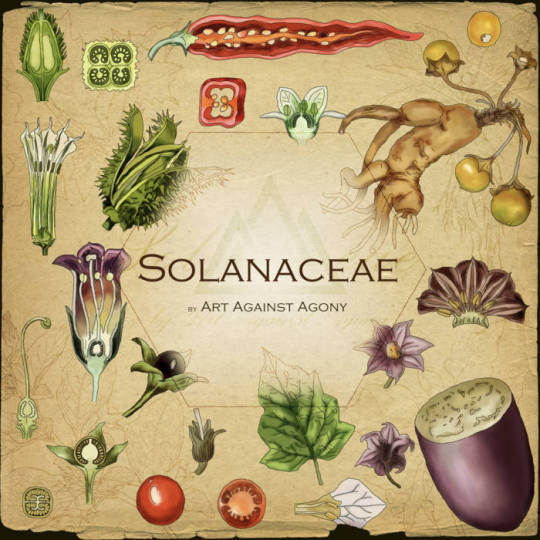
The Solanaceae, also known as the potato or deadly nightshade family
Nicotine is a naturally produced alkaloid in the nightshade family of plants
It contains everything from eggplants and other vegetables to the infamous Deadly Nightshade. (Atropa belladonna)
And of course, like I said, further down the family, it even has nicotiana itself. All of them contain nicotine to some greater or lesser extent. (Yes, hilariously even eggplants, a little bit)
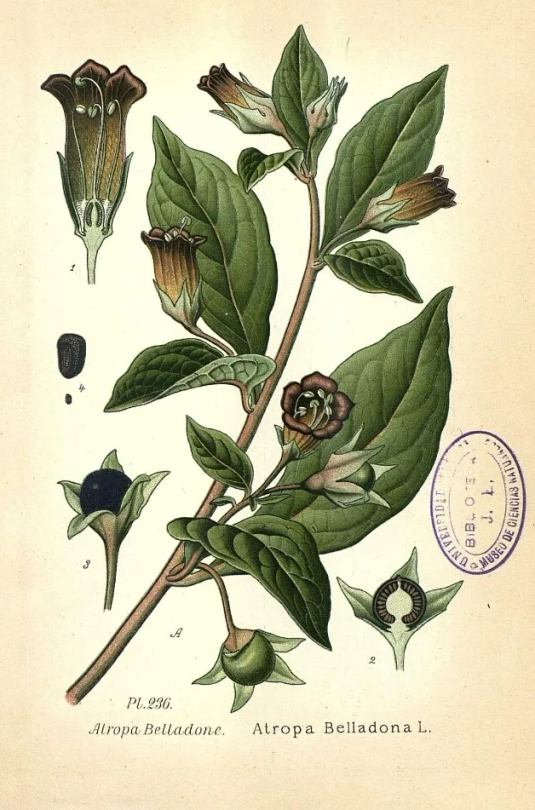
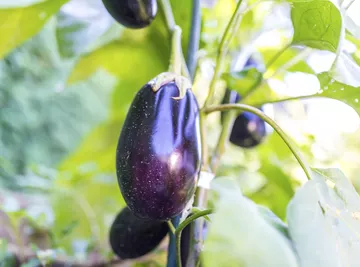
Solanaceae consists of about 98 genera and some 2,700 species. They grow naturally in more parts of the world than wild Nicotiana.
But we are just going to be looking through the nightshade variations, maybe some fruit, but no potatoes today. And these are coveniently famous for their narcotic effects.
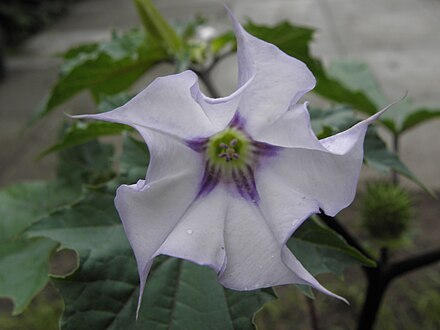
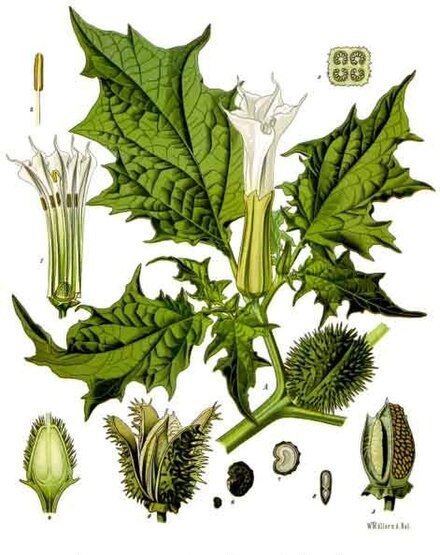
And some varieties, such as the Datura stramonium (occasionally called the Devil's Trumpet) had its leaves smoked in pipes and cigarettes, so much they were traded by the East India Company in the 18th century. And since it was popular for traditional medicine, some people might have even planted it.
But that type is not native to Japan, so it's got the same problem as the nicotiana. Not to mention, even though its an invasive weed, and can survive a little below the freezing point, in its current state, it probably doesn't like mountains. It probably wouldn't last a full winter on one.
This might be definite enough to just say it can be some hypothetical, wild, non specific variation of nightshade with the right combination of alkaloids and nicotine and presumably, relatively non deadly in the form Sannyo uses it.
Or maybe it is just better adapted to mountains form of imported of the Datura stramonium I just mentioned. I doubt even if it spread like a weed, that anyone but Sannyo would bother to figure out you can smoke that type of plant as tobacco.
But we are mostly just having fun at this point.
I doubt we could possibly think Zun cared up to this point, and definitely not beyond this point, we are just doing a fun overanalysis after all. Zun almost always seems to go for extinct species anyway, so it wouldn't be fun to follow that train of thought regardless..
[But if we just want a probable canonical answer Zun thought up. He might have just meant some non specific extinct variation of nightshade, since if there is at least one native version then that's enough to claim there could have once been others,
Besides, it's even possible zun just imagined she could possibly even mix her favorite flowers somehow, which while she probably could not, it would definitely be cute. ]
But we are going to take this further anyway to see if we can find something real and possible that currently exists today.
The simplest thing to think of native to Japan is just Japanese belladonna (Zun's proof of concept for an imaginary extinct nightshade if he really wanted a hypothetical one)
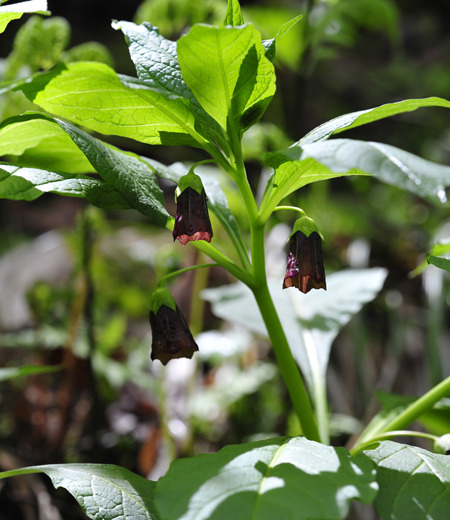
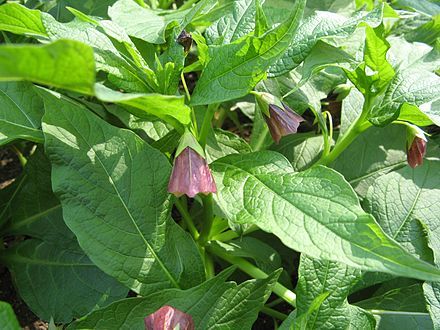
Scopolia japonica, also called Japanese belladonna. It's about as dangerous as the name implies. If eaten by mistake it can cause hallucinations. And while it no doubt contains at least some nicotine, it also contains the alkaloids Scopolamine
And more hilariously Hyoscyamine, known for helping the colon or bladder...
yes, you can use this extract to help you poop or pee if you want too.
Which is even funnier than the marijuana joke i made earlier.
And the only other species in the Scopolia genus is pretty similar and in Korea.
So we'll want to find something different.
But we are trapped. We only have imports left.
And the Datura genus we'd likely want is stuck in the Americas so we can only really consider a variety that came from those possible 18th century imports of Datura stramonium.


They are pretty perfect, tbh, spread widely to the Old World early where it has also become naturalized, and since it was already a weed that could endure dry climate and fairly cold environments. It could probably spread up a mountain.
They are our best bet for something you can smoke for recreation, with nicotine, outside the nicotiana genus that only Sannyo would use. If smoked people used its properties for recreation but you can also use it for anesthesia. Inject it's primary ingredient Atropine and you can use it for all sorts of weird stuff. (Though I pretty much resigned myself to having Atropine in the plant the moment I decided to run up and down the nightshade family).
Though in truth, she's probably just smoking wild tobacco that has lost a lot of flavor while struggling to adapt the mountain. So I'll move on to the most likely answer.
Portugal's more early tobacco is Nicotiana rustica, also called Aztec tobacco.
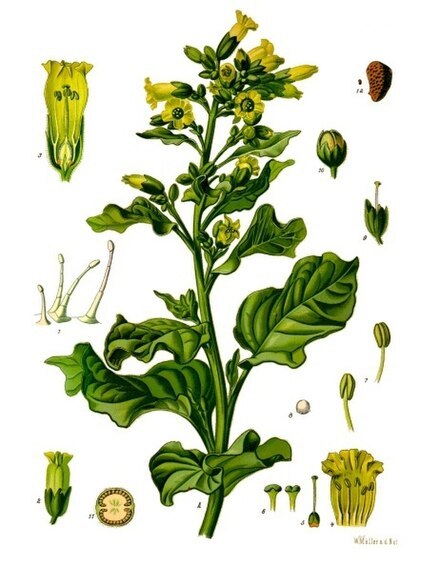
It is pretty tough and would probably adapt to a mountain pretty well.
I'd like to think it's the Datura stramonium since it's cooler and weird though.
In overview:
The simplest, best answer is just wild imported Aztec tobacco (Nicotiana rustica) from Portugal. Which had trade with Japan open up extremely early. Its honestly perfect for this

Followed by the more provocative option of Devil's Trumpet (Datura stramonium) imported later in the 18th century.

and the funny option. The only one actually native to Japan
Japanese belladonna (Scopolia japonica)

But it's almost definitely just that Aztec tobacco. (Nicotiana rustica)

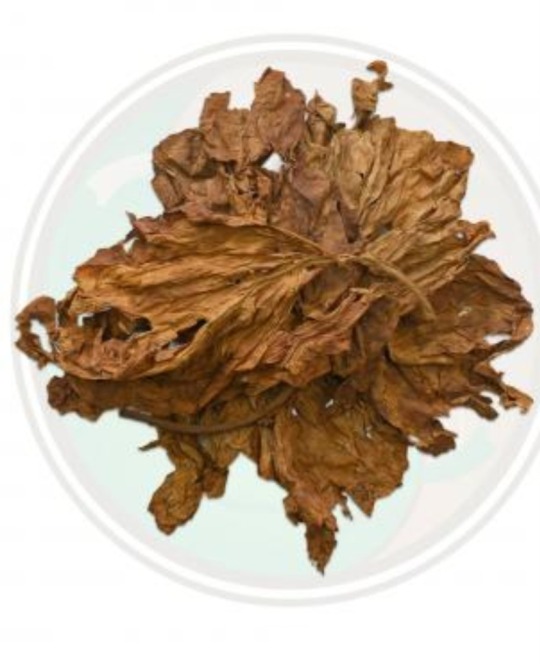
We could just imagine she mixes flowers or herbs into it to validate her "herbs" comment if we want (which again, would be cute)
#sannyo komakusa#touhou project#Flowers#Smoking#This took me collectively more than 16 hours#I had a ton of fun up until the point I realized Japan had like only one native option and was basically stuck with imports completely.#lotus eaters#It's probably just the Aztec tobacco but I felt obligated to run through looking for native nightshade#I'll need to make a short version later.#It's funny that I've imagined a world Sannyo would give smoking almost anything she comes across a shot if nicotine is involved.#mamizou futatsuiwa
34 notes
·
View notes
Text

“If cannabis were discovered in the Amazon rainforest today, people would be clambering to make as much use as they could of all of the potential benefits of the plant. Unfortunately, it carries with it a long history of being a persecuted plant.” ~ Dr. Donald Abrams, Chief of Hematology Oncology at San Francisco General Hospital
Approximately 106,000 Americans die yearly from prescribed medications, according to the American Medical Association. Even more frightening, preventable medical errors account for a staggering 400,000 deaths in the U.S. each year — and is considered the 3rd leading cause of death. “It’s equivalent to 2,000 commercial jets taking off each year knowing that they don’t have enough fuel to complete their journeys,” notes Peter Edelstein M.D. “Would you allow your spouse to board one of those planes? Your friend? A stranger?”
Good question. Increasingly, people in the West are seeking out treatments that work harmoniously with the body, instead of against it — in other words, they’re walking away from the medical establishment and all its mishaps, mistakes and pharmaceutical drugs. A case in point is cannabis, especially in its raw form.
A Rich History
Marijuana is one of those plants that, to many, conjures visions of Drug Enforcement Administration (DEA) raids and hippies in a drugged-out daze. But it wasn’t always this way.
“The ancient Chinese knew of marijuana’s pain-relieving and mind-altering effects, yet it was not widely employed for its psychoactive properties; instead it was cultivated as hemp for the manufacture of rope and fabric. Likewise, the ancient Greeks and Romans used hemp to make rope and sails. In some other places, however, marijuana’s intoxicating properties became important. In India, for example, the plant was incorporated into religious rituals. During the Middle Ages, its use was common in Arab lands; in 15th-century Iraq it was used to treat epilepsy; in Egypt it was primarily consumed as an inebriant. After Napoleon’s occupation of Egypt, Europeans began using the drug as an intoxicant. During the slave trade, it was transported from Africa to Mexico, the Caribbean and South America. Marijuana gained a following in the U.S. only relatively recently. During the second half of the 19th century and the beginning of the 20th, cannabis was freely available without a prescription for a wide range of ailments, including migraine and ulcers,” Roger A. Nicoll and Bradley N. Alger remind us in Scientific American.
Even American Founding Father Thomas Jefferson declared: “Hemp is of first necessity to the wealth and protection of the country.”
So what happened?
In 1937, the United States Congress decided — against the recommendation of the American Medical Association — to pass the Marijuana Tax Act. The legislation essentially banned the use of marijuana by making it excessively expensive and difficult to secure. It has been downhill ever since. That is, until the last few years where legalization of marijuana has exploded in the U.S., for both recreational and medicinal uses. For our purposes here, we’re going to look at the health benefits of the plant — which are quite impressive.
An Essential Vegetable
“It [cannabis] has captured these molecules that help our bodies regulatory system be more effective. The bottom line is it’s a dietary essential that helps all 210 cell types function more effectively. I don’t even refer to it as medicine anymore, strictly as a dietary essential.”
~ Dr. William L. Courtney
It may be a stretch for some to recognize rawcannabis as the next in-demand superfood, but Dr. Courtney, a physician with extensive medical training who specializes in the dietary uses of cannabis, presents a provocative case.
When you heat or age cannabis, Dr. Courtney believes that you lose 99% of the benefit cannabis provides. In contrast, if you consume it raw, you’ll reap the full value of the plant. Plus, raw cannabis is non-psychoactive, so you won’t experience a high — an important point for those who would like to utilize the healing aspects of cannabis without feeling drugged or off-center. This means you can also consume a much higher amount of health-promoting compounds with raw cannabis juice compared to if it was smoked or extracted as an oil, according to Dr. Courtney.
Terpenes, essential oils found in cannabis which give the plant its unique aroma, are particularly compelling.A study published in the British Journal of Pharmacology states that terpenoids are “pharmacologically versatile: they are lipophilic, interact with cell membranes, neuronal and muscle ion channels, neurotransmitter receptors, G-protein coupled (odorant) receptors, second messenger systems and enzymes.”
The researchers explored the powerful effect terpenes exert in animal tests. Limonene was found to increase serotonin in the prefrontal cortex and dopamine in the hippocampus region of the brain — both of which help fend-offdepression and feelings of stress. Moreover, limonene induces apoptosis (cell death) of breast cancer cells and demonstrated exceptional radical scavenging properties. It’s also remarkably bioavailable, rapidly metabolized and is highly non-toxic and non-sensitizing.
Myrcene is anti-inflammatory and an effective sleep aid, while pinene acts as a bronchodilator and broad spectrum antibiotic — including the destruction of lethal MRSA bacteria. Pinene also curbs inflammation. Linalool is a sedative and anticonvulsant. Caryophyllene is antimalarial, anti-inflammatory and useful in treating duodenal ulcers. Nerolidol inhibits fungal growth and protozoal parasites. Phytol increases GABA expression, resulting in a calming effect. These are just a handful of the 200 varieties of terpenes found in cannabis.
How to Enjoy More Raw Cannabis in Your Life
For a daily dose, Dr. Courtney advises juicing fifteen cannabis leaves and two buds, which is then added to a small amount of fruit or vegetable juice that is consumed throughout the day. If you would like to learn more about juicing cannabis, this article offers tips and suggestions. Keep in mind that juicing improperly may create heat, which will cause THC to form. Jeffrey C. Raber, Ph.D. also recommends having the strain of marijuana you’re using tested at a reliable and accurate lab so you know exactly what you are getting.
Article sources:
www.psychologytoday.com
www.humboldtjustice.com
www.globalhealingcenter.com
www.cannabisinternational.org
www.ncbi.nlm.nih.gov
www.huffingtonpost.com
www.projectcbd.org
8 notes
·
View notes
Text
Ayurvedic Medicines and Hemp: Legal Status in India

Every time the topic of the CBD is brought up, its legal status in India is always a hot topic of discussion.
Ayurveda is a traditional Indian system of medicine that has been practiced for centuries. It uses a variety of herbs and plants to treat a wide range of ailments. Hemp is one of the herbs that has been used in Ayurveda for centuries. You may find the legal status of hemp and Ayurvedic medicines in India is quite complex.
But recently, in January 2022, the Central Government of India affirmed the Delhi High Court's ruling that the medical use of cannabis is allowed in India under the Ministry of Ayush. The Centre further empowered the State Governments to permit/license, control, and regulate the cultivation, production, manufacture, transport, import/export, sale/purchase, and consumption of cannabis-based medicines for industrial, horticultural, scientific, and medical purposes.
So, what's becoming clearer with time is that more and more people are recognizing the potential benefits of cannabis for medical purposes. As our understanding of cannabis and its advantages grows, it's pretty likely that the rules around hemp and Ayurvedic medicines will continue to change, much like how our lives keep evolving.
#vegan#ayurveda#recipes#nature#nutrition#exercise#hempmyths#hempproducts#hemp nutrition#hemplife#cannabiscommunity
2 notes
·
View notes
Text
All About: Cannabis
History
- Cannabis probably originated in China. Medical and religious use can be traced to ancient China, India, Egypt and the Middle East.
- At the beginning of the 19th century, Napoleon’s soldiers brought cannabis to France from Egypt in the form of hashish.
- It became very popular with French writers and artists, who established Le Club des Hachichins (The Hashish-Eaters’ Club) in Paris.
Members included Theophile Gautier, Charles Baudelaire, Victor Hugo, Honore de Balzac, and Alexandre Dumas
- Hemp was grown in colonial America, but marijuana smoking probably came to the US with Mexican & Caribbean immigrants in the early 1900s.
- Cannabis (hemp) plant:
High THC content ---> Marijuana, recreational use
Low THC content (less than 0.3%) = industrial hemp
- In 1937, the Marijuana Tax Act instituted a national registration and taxation system aimed at discouraging all use of cannabis. It was overturned in 1969.
- Largely destroyed the hemp industry {note: this benefited paper manufacturers and thus indirectly benefited logging companies}
- United States Department of Agriculture lifted the tax on hemp cultivation during WWII
Legal Status
- In 1970, marijuana and THC became Schedule I illegal drugs.

2014 Farm Bill: permits cultivation of industrial hemp for research purposes
2018 Farm Bill: made industrial hemp legal, allowed CBD oil production
Preparation
- Marijuana is produced from flowering hemp (Cannabis sativa).
- Marijuana is a mixture of dried and crumbled leaves, small stems, and flowering tops.
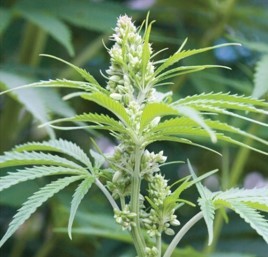
- Hemp seeds have been used for oil and bird food.
- It can be consumed orally, as in cookies or brownies, but is usually smoked in rolled cigarettes known as “joints,” various kinds of pipes, or in hollowed-out cigars called “blunts.”
- Hashish is a cannabis derivative that can be smoked or eaten.
- It can refer to a relatively pure resin preparation with very high cannabinoid content, or a solvent extract of leaves or resin.
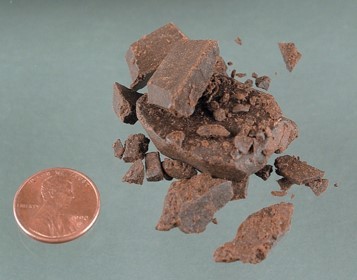
- Hash oil is an alcohol extract. A drop is placed on a tobacco or marijuana cigarette.
Ingredients
- Hemp contains 70 unique compounds known as cannabinoids, plus more than 400 other identified compounds.
- The psychoactive compound /_\9-tetrahydrocannabinol (THC) accounts for the use of cannabis as a drug. {note: that’s supposed to be a triangle; sorry}
- Marijuana potency (in terms of THC content) varies widely, depending on the genetic strain of the plant and growing conditions.
- Potency can be increased by preventing pollination and seed production by the female plants. This marijuana is called sinsemilla (”without seeds”).
- THC was identified as the major active ingredient in 1964.

- Burning marijuana causes the THC to vaporize and enter the smoker’s lungs in small particles.
- Effective dose and latency to onset of effects are influenced by the amount and potency of the plant used, and patterns of smoking (e.g. duration of held breath).
Administration & Absorption
Smoking
- Smoking marijuana is the quickest way to absorb THC, with blood levels peaking between 9-10 minutes into a smoke session.
- THC is easily absorbed by the lungs, and blood plasma levels rise quickly.
Edibles
- Thought to yield peak THC blood levels within 1-5 hours post-ingestion
- Poor absorption results in low and variable plasma levels, probably due to degradation in the stomach, first-pass metabolism.
Elimination
- Blood THC levels decline rapidly after smoking marijuana, but complete elimination from the body is much slower because of persistence in fat tissues.
- Half-life varies from a few hours to 3-4 days
- The gradual movement of THC metabolites back out of fat stores means that urine screening tests can detect them more than 2 weeks after a single incident of marijuana use.
Acute Behavioral Effects
- Effects of cannabinoid use vary depending on dose, frequency of use, characteristics of the user, and the setting in which use occurs.
- Subjective & behavioral effects of marijuana use can be separated into four stages: the “buzz,” the “high,” the stage of being “stoned,” and the “come-down.”
The “high” is associated with feelings of euphoria & exhilaration, and a sense of disinhibition.
Relaxation is the most commonly reported effect of being “stoned.”
- Smoking marijuana can sometimes produce transient psychotic symptoms such as depersonalization, derealization, agitation, and paranoia.
- Expectation also plays a role in what effects the drug will produce, as shown by placebo studies.
- Marijuana negatively affects cognitive functions.
Decreased performance for a variety of verbal, spatial, time estimation, and reaction time tasks has been noted.
Cannabinoids appear to interfere with all aspects of memory processing.
- Marijuana can affect psychomotor functioning under demanding task conditions, such as driving.
- Use of cannabis with or without alcohol is a risk factor in automobile accidents.
Acute Physiological Effects
- increased blood flow to the skin and flushing
- increased heart rate
- increased hunger
Chronic Behavioral Effects
- In young people amount of cannabis use is inversely related to educational performance.
- Some research supports the hypothesis that heavy cannabis use leads to persistent cognitive defects, impairing school performance.
- Alternatively, poor school performance and rejection of mainstream values (such as educational achievement) may increase cannabis use.
- Chronic cannabis use can also result in aimlessness, decreased motivation, lack of planning, and decreased productivity (amotivational syndrome).
{note: Amotivational syndrome can also be caused by SSRIs, and since there is a high rate of comorbidity between depression + anxiety, and between cannabis use + depression and/or anxiety, it can be difficult to determine whether SSRIs or cannabis are causing amotivational syndrome in patients who use both substances.}
- Heavy cannabis use over a long period may lead to impaired executive functioning for at least 2-3 weeks following cessation of use.
- Some data suggest that heavy, long-time users may continue to show impairment in decision-making, planning, and concept formation. It may negatively affect the prefrontal cortex.
- Imaging studies suggest that chronic marijuana use is associated with several kinds of abnormalities in the brain.
- Several studies have found a significant relationship between early heavy marijuana smoking and increased risk for later development of psychotic disorders such as schizophrenia.
Mechanisms of Action
- A cannabinoid receptor in the CNS was identified in 1988.
- Receptors occur in many brain areas.
- Localization of cannabinoid receptors in these areas is consistent with the behavioral effects of these compounds on locomotor activity, coordination, and memory.

- Endogenous neurotransmitter-like substances that act on the receptors = endocannabinoids.
- Two main endocannabinoids have been found: anandamide and 2-AG.

- They are retrograde messengers; they carry information in the opposite direction from normal (i.e. postsynaptic to presynaptic).
- THC similar to endocannabinoids binds to cannabinoid receptors located presynaptically on the nerve terminal. They are metabotropic: they work via G-proteins to inhibit presynaptic voltage-sensitive Ca2+ channels, and open K+ channels.
- As a result, cannabinoids decrease neurotransmitter release from the terminal.

Reinforcement
- In one study, regular marijuana users could discriminate THC-containing marijuana cigarettes from placebos with no THC, and all subjects preferred the marijuana with THC when given a choice.
- Animal studies have also demonstrated reinforcing properties.
Lever pressing by squirrel monkeys for THC stopped when placebos were used.

- Mechanisms for reinforcement:
Activation of the mesolimbic dopamine system: VTA --> NAcc
Interactions between the cannabinoid and opioid systems may play a role in cannabinoid reward and reinforcement; opioid agonists enhance cannabinoid self-administration, and opioid antagonists have the opposite effect.
Tolerance & Dependence
- Animals exposed to THC or other CB1 agonists develop tolerance to the behavioral and physiological effects of these compounds.
- It appears to involve a combination of desensitization and down-regulation of CB1 receptors.

Adverse Health Effects
- There are no reports of death from overdose.
- Smoking marijuana can damage lungs: smoke contains tar, other carcinogens, carbon monoxide, etc.
- Possible adverse cardiac effects?
- Immune system suppression
- THC may affect reproductive functions:
In AFAB people, it can affect ovulation.
In AMAB people, regular smoking has been shown to decrease testosterone levels and sperm counts.
Animal research has demonstrated pregnancy failure, delayed embryonic development, and even fetal death with THC administration.
Smoking marijuana during pregnancy results in cognitive deficits, poor school achievement, and increased risk for tobacco and/or marijuana use later in life.
DSM-5: Cannabis Use Disorder
- Marijuana use typically begins in adolescence and peaks during young adulthood.
- If an individual has not yet tried marijuana by their mid-twenties, they are unlikely to begin at a later age.

- Cannabis use varies based on demographics.
- Research shows college students and young adults most commonly use cannabis...
To socially conform (~40%)
To experiment (~30%)
For enjoyment (~20%)
To manage stress or relax (~10%)
- Risk of dependence is related to drug use patterns. People who progress to daily use have a 10-20% probability of becoming dependent.
- Dependence manifests as a difficulty in stopping one’s use, a craving for marijuana, and (in heavy users) unpleasant withdrawal symptoms:
irritability
increased anxiety
depressed mood
sleep disturbances
heightened aggression
decreased appetite
- These are similar to the symptoms of nicotine withdrawal.
Treatment
- Most cannabis users do not seek treatment.
- Treatment in outpatient programs involves cognitive-behavioral therapy, relapse prevention training, and/or motivational enhancement therapy, but patients are very vulnerable to relapse.
- Some research on medications to relieve withdrawal symptoms has been done.
Therapeutic Uses of Cannabinoids
- AKA “medical marijuana”
- Many states now permit legal use, but clinical studies of its efficacy have produced mixed results.
- Smoked marijuana has the highest potential for adverse health effects and abuse; most researchers favor development of cannabinoid-based drugs instead.
- Information from the National Institute of Health
- The FDA has not approved the cannabis plant for any medical use. However, the FDA has approved several drugs that contain individual cannabinoids:
Epidiolex, which contains a purified form of CBD derived from cannabis, was approved for the treatment of seizures associated with Lennox-Gastaut syndrome or Dravet syndrome, two rare and severe forms of epilepsy.
Marinol and Syndros, which contain dronabinol (synthetic THC) to treat nausea and vomiting caused by chemotherapy. Dronabinol is also used to treat loss of appetite and weight loss in people with HIV/AIDS.
- Endocannabinoids enhance the incentive motivational properties of food and food-mediated reward.
- CB1 receptor antagonists reduce food consumption in animals and human subjects.
- In animal studies, marijuana was shown to relieve anxiety and depression.
- There’s some evidence that marijuana might reduce addiction and/or overdoses caused by other drugs.
- Pain perception: transgenic mice that lack CB1 and CB2 receptors demonstrate hyperalgesia (increased pain sensitivity).
- Clinical evidence for cannabinoids as analgesics has not been convincing.
- Nabiximols (Sativex) is a cannabis extract.
was approved in the UK in 2010 to treat pain and spasticity in multiple sclerosis patients (not yet approved in the US)
- A number of years ago, Jamaican researchers prepared eye drops from cannabis extracts (trade name Canasol) for the purpose of reducing ocular pressure in glaucoma patients.
However, the research is inconclusive and Canasol was never licensed by the FDA for legal marketing in the United States.
4 notes
·
View notes
Text
Abhati Suisse | Manali Moisturizing Shampoo In One Go | Best Shampoo For Curly Hair | Lockenkopf

The Manali Shampoo for curly hair is a moisturizing miracle! Organic hemp seed oil quenches the thirst of dry hair and scalp and lets tired, dull hair shine in new splendour. Experience the exhilaration of clean, well-groomed hair and scalp thanks to the hemp seed oil contained in Manali Shampoo in one piece. The formulation of Manali is pH-neutral and nourishes the hair intensively without weighing it down. Manali is suitable for all hair types.
An ingenious mixture of organic hemp seed oil and elderberry lets tired hair shine again. Spirulina extract, which is rich in amino acids, promotes hair growth and gives your hair suppleness and a shimmering radiance.
The name Manali refers to a sacred center of hemp cultivation in India, which is located high up in the mountains of Himachal Pradesh. The hempseed oil in Manali contains a highly concentrated charge of essential fatty acids that provide intensive care for both hair and scalp.
Abhati Suisse do without packaging and create a Zero-Waste product! One piece of Kaveri is equivalent to two bottles of conventional shampoo - completely without waste. Kaveri is made of high quality, 100% pure vegetable ingredients and is produced without a single drop of water. It also contains no soap, surfactants, silicones, artificial additives or fragrances and is vegan.
0 notes
Text
From Field to Fork: The Journey of Nutrient-Rich Hemp Seeds
I. Introduction
As the wellness wave sweeps across the globe, hemp seeds have emerged as nutritional powerhouses, gaining popularity for their myriad health benefits. In this comprehensive exploration, we delve into the journey of nutrient-rich hemp seeds, from the cultivation fields to the consumer's table.

II. Cultivation and Harvesting
Hemp's journey begins with a tiny seed that transforms into a resilient plant. Sustainable farming practices play a crucial role in ensuring the health and vitality of hemp plants. From choosing the right seeds to implementing eco-friendly cultivation methods, farmers contribute to the nutrient density of the seeds. Harvesting techniques are also key to preserving the seeds' richness, ensuring that they reach their full potential.
III. Processing and Extraction
Once harvested, the journey continues with meticulous processing and extraction methods. Seed extraction is a delicate process aimed at preserving the nutrients within. Cleaning and sorting processes add another layer of quality control, ensuring that only the finest seeds make it to the next stage. Oil extraction, a vital step, unlocks the health benefits encapsulated within the seeds, providing a concentrated source of essential fatty acids.
IV. Nutrient-Rich Profile of Hemp Seeds
Hemp seeds boast an impressive nutrient profile. Packed with essential vitamins, minerals, and a well-balanced combination of macronutrients – protein, fiber, and healthy fats – these tiny seeds offer a nutritional punch. Understanding the depth of this profile is crucial for consumers looking to maximize the health benefits of hemp seeds in their diets.
V. Transportation and Distribution
Ensuring the freshness of hemp seeds is paramount during transportation and distribution. Proper handling and storage practices maintain the seeds' quality from the farm to the distributor. The journey to market involves a well-coordinated effort, involving various stakeholders in the supply chain. Sustainable packaging adds an extra layer, reducing the environmental impact and aligning with the ethos of conscious consumerism.
VI. Culinary Adventures with Hemp Seeds
Hemp seeds are versatile in the kitchen, offering creative possibilities for culinary exploration. From sprinkling seeds on salads to incorporating them into smoothies, the options are endless. The article provides popular recipes that showcase the nutrient-rich goodness of hemp seeds and offers culinary tips to maximize both flavor and nutrition.
VII. Dispelling Myths and Addressing Concerns
With popularity comes misinformation. This section addresses common misconceptions surrounding hemp seeds, clarifies legal considerations to navigate regulations, and provides facts versus fiction regarding allergies associated with hemp seeds.
VIII. Real Stories from the Hemp Fields
The human touch is brought to life through interviews with hemp farmers and producers. Their experiences, successes, and dedication to sustainable hemp farming contribute not only to the seeds' quality but also to the interconnectedness between producers and consumers.
IX. Future Trends in Hemp Cultivation
Looking ahead, we explore the innovations shaping the future of hemp cultivation. From sustainable farming practices to the role of hemp seeds in climate-resilient agriculture, this section peers into the crystal ball, offering insights into the potential trajectory of hemp seed production.
Source High-Quality Hemp Seeds from Hemp in India
Looking for bulk hemp seeds for planting or industrial applications? Hemp in India is your one-stop shop! We offer a variety of premium seed options to suit your needs. Visit our website www.hempinindia.com to explore our selection and start your hemp journey today.
X. Conclusion: Nourishing the World, One Seed at a Time
As we reflect on the nutrient-rich journey of hemp seeds, the article concludes by encouraging conscious consumer choices. From field to fork, the wholesome path of hemp seeds symbolizes not only a nutritious choice but a sustainable and interconnected approach to nourishing the world, one seed at a time.
0 notes
Text
Cannabis Cultivation Market Drivers, Sales, Profits & Analysis by Forecast to 2030
Investors are expected to receive business-oriented market insights from The Insight Partners "Overview of Cannabis Cultivation Market Share, Size, and 2030" | market study. This study incorporates forecasts for the future market in addition to operational variables. This research addresses a variety of possibilities accessible for Cannabis Cultivation market participants in addition to drivers and obstacles. Valid facts included in this research have been framed using both primary and secondary research approaches.
Cannabis Cultivation Market research delves deeply into many categories to provide a thorough perspective for both seasoned players and recent arrivals. Companies may guarantee they have a competitive edge by using this market research to have a better perspective and knowledge of the target audience. Before making significant investments, businesses must have a firm understanding of the market. It makes financial sense to allocate a modest portion of your company's expenditure to reliable market research.
Firms must take an open-minded attitude in light of the competitive landscape discussed in this research. Companies may utilize the objective insights provided by this market research to identify their strengths and limitations. Companies that can capitalize on the fresh ideas gained from competition analysis will have an edge in moving forward.
A market research report, which contains proof of market research and provides the best opportunity for businesses to fulfill their objectives, might serve as the cornerstone of your business strategy.
Key objectives of this research are:
Global Cannabis Cultivation Market Insights- Market Share, Market Size, and CAGR
To Examine Drivers, Challenges, and Opportunities in Cannabis Cultivation Market
To offer competitive strategic insights that help businesses ace the game
To offer an actionable market recommendation
To brief on the impact of COVID-19 and present an account of strategic responses businesses can plan.
To analyze the Cannabis Cultivation market benchmarks.
COVID-19 Impact Analysis
Halting the operations temporarily, an epidemic of COVID-19 influenced on revenues of key Cannabis Cultivation market players. This section presents details on the range of responses businesses have to pandemic impacts and assists companies in developing post-pandemic strategies. Moving further, this chapter offers insights into supply-demand parameters for businesses to rejoin the market.
To Summarize the Offerings-
Market Forecast- Coverage- Market Size, Share, and CAGR | Forecast by 2030
Market Scope– Aim of the research, A glance at key chapters
Market Dynamics- Drivers, Challenges, Regional Trends, and Market Opportunities
Market Segmentation – Product, Application, End-use Industries, and Regional Growth Prospects.
Market Players – Key Market Players and Strategies
Recent Developments and Innovation in Cannabis Cultivation Market
Covid-19 Analysis- Industry Landscape During and Post-Pandemic.
Regional Framework- Key Regional Markets, Growth Projections
Market SegmentationBased on By Product this market is categorized further into- :
Buds
Oils
Tinctures
Based on Applications this market is categorized further into- :
Medical
Recreational
Industrial Hemp
Based on Geography this market is categorized further into- :
North America
Europe
Asia Pacific
and South and Central America
Key regions Cannabis Cultivation Market Research Report:
North America (U.S., Canada, Mexico)
Europe (U.K., France, Germany, Spain, Italy, Central & Eastern Europe, CIS)
Asia Pacific (China, Japan, South Korea, ASEAN, India, Rest of Asia Pacific)
Latin America (Brazil, Rest of Latin America)
The Middle East and Africa (Turkey, GCC, Rest of the Middle East and Africa)
Rest of the World
Avi
Senior Market Research expert at The Insight Partners
0 notes
Text
What We Learn About Marijuana Featured Matters Marijuana And Public Well Being
The rigorous scientific study of hashish as a drugs has been hampered by manufacturing restrictions and by the truth that it is categorised as an unlawful drug by many governments. There is some proof suggesting cannabis can be used to scale back nausea and vomiting throughout chemotherapy, to enhance appetite in individuals with HIV/AIDS, or to deal with chronic pain and muscle spasms. Evidence for its use for different medical applications is inadequate for drawing conclusions about safety or efficacy. There is evidence supporting the usage of hashish or its derivatives in the remedy of chemotherapy-induced nausea and vomiting, neuropathic ache, and a quantity of sclerosis. Lower ranges of proof assist its use for AIDS wasting syndrome, epilepsy, rheumatoid arthritis, and glaucoma.
youtube
The Iranians also introduced cannabis to the Scythians, Thracians and Dacians, whose shamans (the kapnobatai– "those who walk on smoke/clouds") burned hashish infructescences to induce trance. The plant was used in China before 2800 BC, and located therapeutic use in India by one thousand BC, the place it was used in food and drink, including bhang. According to the United Nations Office on Drugs and Crime , "the quantity of THC present in a cannabis pattern is generally used as a measure of hashish efficiency." The three main types of cannabis products are the flower/fruit, resin , and oil . The UNODC states that hashish usually contains 5% THC content, resin "can include as a lot as 20% THC content material", and that "Cannabis oil may contain greater than 60% THC content."
On 1 January 2013, the first cannabis "club" for personal marijuana smoking was allowed for the primary time in Colorado. The California Supreme Court decided in May 2013 that native governments can ban medical hashish dispensaries despite a state law in California that allows using cannabis for medical functions. At least one hundred eighty cities across California have enacted bans lately. See additionally international locations which have legalized medical use of cannabis.Since the beginning of the twentieth century, most international locations have enacted legal guidelines towards the cultivation, possession or switch of hashish.
Various forms of the drug hashish exist, including extracts similar to cannabis and hash oil which, because of appearance, are more prone to adulterants when left unregulated. Normal cognition is restored after roughly three hours for bigger doses by way of a smoking pipe, bong or vaporizer. However, if a large amount is taken orally the effects might last for much longer. After 24 hours to a couple days, minuscule psychoactive effects may be felt, relying on dosage, frequency and tolerance to the drug. A 2020 evaluation of single-nucleotide polymorphisms stories 5 clusters of hashish, roughly corresponding to hemps (including people "Ruderalis") folks "Indica" and folks "Sativa".
What Are The Short-term Results Of Cannabis?
It's unlikely that a person will fail a drug check or get excessive from passive exposure by inhaling secondhand marijuana smoke. Although these findings assist the thought of marijuana as a "gateway drug," the majority of folks that use marijuana don't go on to make use of other "tougher" medication. It's additionally necessary to note that different elements apart from biological mechanisms, such as a person’s social environment, are also important in a person’s danger for drug use and addiction.
There have been reports of contamination of cannabis/cannabinoid products with microorganisms, pesticides, or other substances. Inflammatory bowel disease is the name for a gaggle of situations by which the digestive tract turns into infected. Ulcerative colitis and Crohn’s disease are the most common sorts. Symptoms might include belly pain, diarrhea, lack of appetite, weight loss, and fever. https://lifealofa.com/can-you-study-computer-science-without-prior-knowledge/ can range from gentle to extreme, and they can come and go, typically disappearing for months or years after which returning.
This is the oldest documentation of cannabis as a pharmacologically lively agent.
This means that on its means from the midrib of the leaflet to the purpose of the serration, the vein serving the tip of the serration passes close by the intervening notch.
Four research have advised that cannabinoids could additionally be helpful for anxiousness in people with chronic pain; the research participants didn't necessarily have anxiety disorders.
Studies to develop methods to synthesize cannabinoids in yeast .
In 1997, hashish was estimated to be general the number 4 worth crop in the US, and number one or two in many states, together with California, New York, and Florida.
The gateway effect could appear because of social factors involved in using any unlawful drug.
The plant incorporates the mind-altering chemical THC and different related compounds. Marijuana use might have a variety of effects, each physical and psychological. "RAND examine casts doubt on claims that marijuana acts as a "gateway" to the use of cocaine and heroin". "Clarence Thomas says federal laws towards marijuana might now not be essential". " graines cannabis becomes second nation on the earth to legalize marijuana".
Research-grade samples of the drug are troublesome to acquire for research functions, until granted underneath authority of national regulatory agencies, such because the US Food and Drug Administration. A associated different to the gateway speculation is the common liability to addiction principle. It states that some individuals are, for varied causes, prepared to strive multiple recreational substances. The "gateway" medicine are merely those which are obtainable at an earlier age than the more durable medicine.
Sativa
The word “marijuana” refers to parts of or products from the plant Cannabis sativa that contain substantial amounts of tetrahydrocannabinol . THC is the substance that’s primarily liable for the results of marijuana on a person’s psychological state. Under U.S. regulation, these crops are considered “industrial hemp” quite than marijuana. Main short-term physical results of cannabisAcute adverse results might include nervousness and panic, impaired attention and reminiscence, an elevated risk of psychotic signs, the shortcoming to suppose clearly, and an elevated danger of accidents.
Sativa, presumably chosen for traits that enhance fiber or seed production.C. Cannabinoids, terpenoids, and different compounds are secreted by glandular trichomes that happen most abundantly on the floral calyxes and bracts of female plants. Cannabis is predominantly dioecious, having imperfect flowers, with staminate "male" and pistillate "feminine" flowers occurring on separate vegetation. "At a very early interval the Chinese acknowledged the Cannabis plant as dioecious", and the (c. third century BCE) Erya dictionary defined xi 枲 "male Cannabis" and fu 莩 (or ju 苴) "feminine Cannabis". Male flowers are normally borne on loose panicles, and feminine flowers are borne on racemes.
In December 2013, Uruguay grew to become the primary nation to legalize rising, sale and use of hashish. After a protracted delay in implementing the retail component of the legislation, in 2017 sixteen pharmacies had been licensed to sell cannabis commercially. On 19 June 2018, the Canadian Senate passed a bill and the Prime Minister introduced the efficient legalization date as 17 October 2018.
It has also opened up doors to an economic market that has been largely untouched as a result of legalities that surrounded the use and manufacturing of hashish. Cannabis-infused lotions, balms, and oils are absorbed through the skin for localized relief of ache, soreness, and irritation. Topicals are often chosen by individuals who need the therapeutic advantages of marijuana with out the mood-altering effects. Cannabis is more often seen in tea kind in cultures outdoors of the United States.
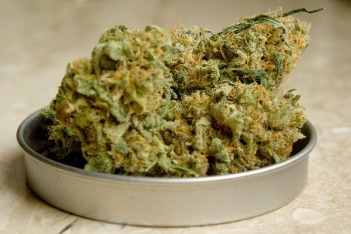
Therefore, it’s unknown whether cannabis or cannabinoids can be helpful. Marinol and Syndros, which include dronabinol , and Cesamet, which contains nabilone , are accredited by the FDA. Dronabinol and nabilone are used to deal with nausea and vomiting caused by cancer chemotherapy. Dronabinol can additionally be used to treat loss of urge for food and weight reduction in individuals with HIV/AIDS. Cannabinoids are a gaggle of drugs found in the cannabis plant.
In different words, marijuana is hashish, but not all forms of hashish are marijuana . Verywell Health makes use of only high-quality sources, including peer-reviewed studies, to support the information within our articles. Read our editorial course of to learn more about how we fact-check and keep our content correct, reliable, and reliable. graines cannabis ’s a versatile gift from Mother Nature that, when used accurately, might be the following big thing in medicinal and industrial merchandise.
Scientists have historically categorised marijuana as a hallucinogen. However, not all instances of marijuana use cause hallucinogen-like effects. Cannabis is believed to have originated in Mongolia and southern Siberia, though some keep that the plant could be found in the early years in South Asia, Afghanistan, and the Huang River Valley in northern China.
1 note
·
View note
Text
Cannabis Marijuana And Cannabinoids: What You Have To Know
These legal guidelines have had an adverse impact on cannabis cultivation for non-recreational purposes, however there are numerous regions the place dealing with of hashish is legal or licensed. Many jurisdictions have lessened the penalties for possession of small portions of cannabis in order that it's punished by confiscation and typically a fine, quite than imprisonment, focusing more on those that traffic the drug on the black market. Present-day map of the Jirzankal Cemetery, web site of the earliest proof of hashish smokingCannabis is indigenous to Central or South Asia and its uses for fabric and cord dates again to the Neolithic age in China and Japan. It is unclear when cannabis first turned known for its psychoactive properties. Some research means that the ancient Indo-Iranian drug soma, talked about in the Vedas, generally contained cannabis. This relies on the discovery of a basin containing cannabis in a shrine of the second millennium BC in Turkmenistan.
"Sativa" is the most widespread selection, which is often tall, laxly branched, and found in heat lowland regions.
According to the United Nations Office on Drugs and Crime , "the quantity of THC current in a hashish sample is mostly used as a measure of hashish efficiency." The three major forms of hashish merchandise are the flower/fruit, resin , and oil .
Simple possession can carry lengthy prison terms in some countries, particularly in East Asia, where the sale of cannabis might lead to a sentence of life in jail and even execution.
The plant was used in China earlier than 2800 BC, and located therapeutic use in India by a thousand BC, the place it was used in foods and drinks, together with bhang.
Indica (Lam.) Small & Cronq., primarily chosen for drug production.C. Plants cultivated for drug production, described as high-intoxicant or drug varieties. Plants cultivated for fiber and seed production, described as low-intoxicant, non-drug, or fiber sorts.
The mention of any product, service, or remedy is not an endorsement by NCCIH. NCCIH and the National Institutes of Health present instruments that can help you perceive the fundamentals and terminology of scientific research so you could make well-informed selections about your well being. Know the Science features a selection of materials, including interactive modules, quizzes, and movies, in addition to links to informative content material from Federal sources designed to help shoppers make sense of well being information. Research to judge the connection between cannabis smoking and sort 2 diabetes. Some long-term customers of high doses of hashish have developed a situation involving recurrent severe vomiting.
Getting High From Passive Exposure?
The plant is also recognized as hemp, although this time period is commonly used to refer only to varieties of Cannabis cultivated for non-drug use. Cannabis has long been used for hemp fibre, hemp seeds and their oils, hemp leaves for use as greens and as juice, medicinal purposes, and as a leisure drug. Industrial hemp merchandise are created from cannabis plants chosen to supply an abundance of fibre. Various hashish strains have been bred, usually selectively to produce excessive or low ranges of tetrahydrocannabinol , a cannabinoid and the plant's principal psychoactive constituent. Compounds similar to hashish and hash oil are extracted from the plant. In 2020, the National Institute on Drug Abuse launched a study backing allegations that marijuana is a gateway to harder medicine, although not for virtually all of marijuana users.
Many nations regulate limits for psychoactive compound concentrations in products labeled as hemp. The scientific debate regarding taxonomy has had little effect on the terminology in widespread use amongst cultivators and customers of drug-type Cannabis. Cannabis aficionados acknowledge three distinct types based on such components as morphology, native range, aroma, and subjective psychoactive characteristics.
Approximately graines cannabis in 10 grownup customers of marijuana develop hashish use dysfunction. SUD is a psychological health condition in which an individual has a problematic sample of substance use that causes distress and/or impairs their life. Scientists and healthcare providers can’t state any basic benefits of marijuana with certainty.

The worth or road value of cannabis varies broadly depending on geographic space and efficiency. Prices and general markets have additionally diversified considerably over time. THC seems to alter mood and cognition by way of its agonist actions on the CB1 receptors, which inhibit a secondary messenger system in a dose-dependent method. A 16-month survey of Oregon and Alaska emergency departments found a report of the dying of an adult who had been admitted for acute cannabis toxicity. In 2018, virtually half of the folks in the United States had tried marijuana, 16% had used it up to now yr, and 11% had used it up to now month.
Adverse Effects
Over ninety four million Americans have admitted to utilizing hashish as a leisure drug a minimum of as quickly as of their lifetimes, with 11.8 million younger adults admitting to using in 2018 alone. The medicinal use of hashish has been a controversial matter due to legal issues surrounding its use. Medical hashish is derived from the Cannabis sativa plant, and both THC and CBD can be used for a selection of totally different ailments. The cannabis plant that can be used to create hemp is usually slender with small flowers and spike-like clusters. The fibers are taken from the plant following an intensive course of. Cannabis plants have many alternative makes use of relying on the species, extraction method, dosing kind, and amount.
Since the 13th century CE, cannabis has been used among Sufis – the magical interpretation of Islam that exerts sturdy affect over local Muslim practices in Bangladesh, India, Indonesia, Turkey, and Pakistan. Cannabis preparations are incessantly used at Sufi festivals in these nations. Cannabis for industrial uses is efficacious in tens of 1000's of economic products, particularly as fibre starting from paper, cordage, construction materials and textiles in general, to clothes.
youtube
If it's, think about talking to a doctor or pharmacist beforehand to ensure it won’t work together with any drugs or dietary supplements you're taking. A physician also can allow you to weigh the potential benefits and risks to your well being. If you’re interested in making an attempt cannabis, begin by checking whether or not it’s legal in your space. If you’re interested in making an attempt hashish, make sure to learn up on the laws in your space first.
Cannabinol was the first compound to be isolated from cannabis extract in the late 1800s. Its construction and chemical synthesis had been achieved by 1940, followed by a few of the first preclinical analysis research to find out the effects of individual cannabis-derived compounds in vivo. The question of whether heteromorphic intercourse chromosomes are indeed present is most conveniently answered if such chromosomes were clearly visible in a karyotype. Cannabis was one of many first plant species to be karyotyped; however, this was in a period when karyotype preparation was primitive by modern standards. Heteromorphic intercourse chromosomes had been reported to occur in staminate people of dioecious "Kentucky" hemp, but were not present in pistillate individuals of the same selection. Heterosomes weren't noticed in analyzed individuals of monoecious "Kentucky" hemp, nor in an unidentified German cultivar.
Some people who know very little about edibles don't realize that it takes longer for the physique to feel marijuana’s results when eaten quite than smoked. So they eat extra of the edible, attempting to get excessive quicker or considering they haven't taken sufficient. In addition, some infants and toddlers have been significantly unwell after ingesting marijuana or marijuana edibles left round the house.
This is the oldest documentation of cannabis as a pharmacologically lively agent. According to Delphic evaluation by British researchers in 2007, cannabis has a decrease danger issue for dependence in comparison with both nicotine and alcohol. However, on an everyday basis use of hashish could additionally be correlated with psychological withdrawal symptoms, such as irritability or insomnia, and susceptibility to a panic assault may enhance as ranges of THC metabolites rise.
0 notes
Text
Cannabis Marijuana And Cannabinoids: What You Have To Know
These laws have had an antagonistic effect on cannabis cultivation for non-recreational functions, but there are lots of regions the place handling of hashish is legal or licensed. Many jurisdictions have lessened the penalties for possession of small portions of hashish in order that it's punished by confiscation and typically a nice, rather than imprisonment, focusing more on those that traffic the drug on the black market. Present-day map of the Jirzankal Cemetery, web site of the earliest proof of hashish smokingCannabis is indigenous to Central or South Asia and its makes use of for fabric and rope dates again to the Neolithic age in China and Japan. It is unclear when hashish first became identified for its psychoactive properties. Some analysis suggests that the ancient Indo-Iranian drug soma, mentioned within the Vedas, generally contained cannabis. This is based on the invention of a basin containing hashish in a shrine of the second millennium BC in Turkmenistan.
According to the United Nations Office on Drugs and Crime , "the amount of THC current in a cannabis pattern is usually used as a measure of cannabis potency." The three main types of hashish merchandise are the flower/fruit, resin , and oil .
Simple possession can carry lengthy jail phrases in some nations, significantly in East Asia, where the sale of cannabis could result in a sentence of life in prison and even execution.
The plant was utilized in China earlier than 2800 BC, and located therapeutic use in India by 1000 BC, the place it was used in food and drinks, together with bhang.
Indica (Lam.) Small & Cronq., primarily selected for drug manufacturing.C. Plants cultivated for drug manufacturing, described as high-intoxicant or drug types. Plants cultivated for fiber and seed manufacturing, described as low-intoxicant, non-drug, or fiber sorts.
The point out of any product, service, or therapy just isn't an endorsement by NCCIH. NCCIH and the National Institutes of Health present instruments that will assist you perceive the fundamentals and terminology of scientific research so you can make well-informed choices about your well being. Know the Science features quite a lot of materials, together with interactive modules, quizzes, and videos, in addition to links to informative content from Federal assets designed to help shoppers make sense of well being data. Research to gauge the relationship between cannabis smoking and type 2 diabetes. Some long-term users of high doses of cannabis have developed a situation involving recurrent extreme vomiting.
Getting High From Passive Exposure?
The plant is also called hemp, although this term is usually used to refer only to sorts of Cannabis cultivated for non-drug use. Cannabis has long been used for hemp fibre, hemp seeds and their oils, hemp leaves to be used as vegetables and as juice, medicinal purposes, and as a recreational drug. Industrial hemp merchandise are made from hashish vegetation selected to provide an abundance of fibre. Various cannabis strains have been bred, typically selectively to produce high or low levels of tetrahydrocannabinol , a cannabinoid and the plant's principal psychoactive constituent. Compounds similar to cannabis and hash oil are extracted from the plant. In 2020, the National Institute on Drug Abuse released a study backing allegations that marijuana is a gateway to tougher medicine, although not for virtually all of marijuana customers.
Many international locations regulate limits for psychoactive compound concentrations in merchandise labeled as hemp. The scientific debate relating to taxonomy has had little effect on the terminology in widespread use amongst cultivators and users of drug-type Cannabis. Cannabis aficionados acknowledge three distinct varieties primarily based on such components as morphology, native vary, aroma, and subjective psychoactive characteristics.
Approximately 1 in 10 adult users of marijuana develop cannabis use dysfunction. SUD is a psychological health condition by which an individual has a problematic sample of substance use that causes distress and/or impairs their life. Scientists and healthcare suppliers can’t state any common benefits of marijuana with certainty.

The value or avenue worth of cannabis varies broadly relying on geographic space and efficiency. Prices and total markets have also various considerably over time. THC seems to alter temper and cognition by way of its agonist actions on the CB1 receptors, which inhibit a secondary messenger system in a dose-dependent manner. graines cannabis -month survey of Oregon and Alaska emergency departments discovered a report of the death of an adult who had been admitted for acute cannabis toxicity. In 2018, nearly half of the folks within the United States had tried marijuana, 16% had used it prior to now yr, and 11% had used it up to now month.
Opposed Results
Over ninety four million Americans have admitted to utilizing cannabis as a leisure drug at least as quickly as in their lifetimes, with 11.eight million young adults admitting to using in 2018 alone. The medicinal use of hashish has been a controversial subject due to legal points surrounding its use. Medical cannabis is derived from the Cannabis sativa plant, and each THC and CBD can be used for a wide range of different ailments. The cannabis plant that can be utilized to create hemp is mostly slender with small flowers and spike-like clusters. The fibers are taken from the plant following an in depth process. graines cannabis have many various uses relying on the species, extraction methodology, dosing kind, and quantity.
Since the thirteenth century CE, hashish has been used among Sufis – the magical interpretation of Islam that exerts sturdy influence over native Muslim practices in Bangladesh, India, Indonesia, Turkey, and Pakistan. Cannabis preparations are frequently used at Sufi festivals in those countries. Cannabis for industrial uses is valuable in tens of hundreds of business merchandise, particularly as fibre starting from paper, cordage, building materials and textiles normally, to clothes.
youtube
If it's, consider talking to a physician or pharmacist beforehand to ensure it won’t interact with any drugs or dietary supplements you take. A doctor can also help you weigh the potential advantages and risks to your health. If you’re interested by trying cannabis, begin by checking whether it’s legal in your space. If you’re curious about making an attempt hashish, make sure to read up on the legal guidelines in your space first.
How Does Marijuana Have An Result On The Brain?
Cannabinol was the first compound to be isolated from cannabis extract in the late 1800s. Its structure and chemical synthesis have been achieved by 1940, adopted by a few of the first preclinical research research to determine the effects of individual cannabis-derived compounds in vivo. The question of whether or not heteromorphic sex chromosomes are certainly present is most conveniently answered if such chromosomes had been clearly seen in a karyotype. Cannabis was one of the first plant species to be karyotyped; nevertheless, this was in a interval when karyotype preparation was primitive by modern standards. Heteromorphic intercourse chromosomes had been reported to happen in staminate individuals of dioecious "Kentucky" hemp, but weren't present in pistillate people of the identical selection. Heterosomes weren't observed in analyzed people of monoecious "Kentucky" hemp, nor in an unidentified German cultivar.
Some individuals who know very little about edibles don't realize that it takes longer for the physique to really feel marijuana’s effects when eaten somewhat than smoked. So they eat more of the edible, attempting to get excessive quicker or considering they haven't taken sufficient. In addition, some babies and toddlers have been critically ill after ingesting marijuana or marijuana edibles left round the home.
This is the oldest documentation of cannabis as a pharmacologically energetic agent. According to Delphic evaluation by British researchers in 2007, hashish has a lower danger issue for dependence compared to each nicotine and alcohol. However, everyday use of hashish could additionally be correlated with psychological withdrawal signs, corresponding to irritability or insomnia, and susceptibility to a panic assault might improve as levels of THC metabolites rise.
1 note
·
View note
Text
What We Know About Marijuana Featured Subjects Marijuana And Public Well Being
The rigorous scientific study of hashish as a drugs has been hampered by manufacturing restrictions and by the reality that it's categorised as an unlawful drug by many governments. There is a few proof suggesting cannabis can be utilized to scale back nausea and vomiting during chemotherapy, to improve urge for food in people with HIV/AIDS, or to deal with persistent pain and muscle spasms. Evidence for its use for other medical purposes is insufficient for drawing conclusions about safety or efficacy. There is proof supporting using hashish or its derivatives within the remedy of chemotherapy-induced nausea and vomiting, neuropathic pain, and a quantity of sclerosis. Lower ranges of evidence assist its use for AIDS wasting syndrome, epilepsy, rheumatoid arthritis, and glaucoma.
youtube
The Iranians also introduced cannabis to the Scythians, Thracians and Dacians, whose shamans (the kapnobatai– "those who walk on smoke/clouds") burned cannabis infructescences to induce trance. The plant was utilized in China before 2800 BC, and found therapeutic use in India by a thousand BC, the place it was used in food and drinks, together with bhang. According to the United Nations Office on Drugs and Crime , "the amount of THC present in a cannabis sample is mostly used as a measure of cannabis potency." The three major forms of cannabis products are the flower/fruit, resin , and oil . The UNODC states that cannabis typically incorporates 5% THC content material, resin "can contain up to 20% THC content", and that "Cannabis oil might comprise greater than 60% THC content material."
On 1 January 2013, the primary hashish "membership" for personal marijuana smoking was allowed for the first time in Colorado. The California Supreme Court decided in May 2013 that local governments can ban medical hashish dispensaries despite a state regulation in California that allows the usage of hashish for medical functions. At least a hundred and eighty cities throughout California have enacted bans in recent years. See additionally international locations that have legalized medical use of hashish.Since the beginning of the 20th century, most nations have enacted laws against the cultivation, possession or switch of hashish.
Various forms of the drug cannabis exist, including extracts corresponding to hashish and hash oil which, because of look, are more susceptible to adulterants when left unregulated. Normal cognition is restored after roughly three hours for bigger doses via a smoking pipe, bong or vaporizer. However, if a big quantity is taken orally the results might last for much longer. After 24 hours to a few days, minuscule psychoactive results may be felt, depending on dosage, frequency and tolerance to the drug. A 2020 analysis of single-nucleotide polymorphisms stories five clusters of hashish, roughly similar to hemps (including folks "Ruderalis") folks "Indica" and people "Sativa".
What Are The Short-term Results Of Cannabis?
It's unlikely that a person will fail a drug test or get excessive from passive publicity by inhaling secondhand marijuana smoke. Although these findings assist the idea of marijuana as a "gateway drug," the bulk of people who use marijuana don't go on to make use of other "harder" medication. It's additionally important to note that other factors in addition to organic mechanisms, corresponding to a person’s social surroundings, are also important in a person’s risk for drug use and habit.
There have been stories of contamination of cannabis/cannabinoid merchandise with microorganisms, pesticides, or different substances. Inflammatory bowel illness is the name for a gaggle of conditions during which the digestive tract becomes inflamed. Ulcerative colitis and Crohn’s disease are the most common types. Symptoms might include belly ache, diarrhea, loss of appetite, weight loss, and fever. The signs can range from gentle to extreme, and so they can come and go, sometimes disappearing for months or years after which returning.
This is the oldest documentation of hashish as a pharmacologically energetic agent.
This signifies that on its method from the midrib of the leaflet to the point of the serration, the vein serving the tip of the serration passes shut by the intervening notch.
Four research have instructed that cannabinoids may be useful for nervousness in folks with persistent ache; the examine participants didn't necessarily have anxiety disorders.
Studies to develop methods to synthesize cannabinoids in yeast .
In 1997, hashish was estimated to be total the number 4 value crop within the US, and number one or two in lots of states, together with California, New York, and Florida.
The gateway impact could appear as a end result of social factors involved in utilizing any unlawful drug.
The plant accommodates the mind-altering chemical THC and different associated compounds. Marijuana use might have a broad range of results, each bodily and psychological. "RAND research casts doubt on claims that marijuana acts as a "gateway" to the usage of cocaine and heroin". " graines cannabis says federal laws towards marijuana may no longer be needed". "Canada becomes second nation on the earth to legalize marijuana".
Research-grade samples of the drug are troublesome to acquire for analysis purposes, until granted beneath authority of nationwide regulatory agencies, such because the US Food and Drug Administration. A associated various to the gateway hypothesis is the frequent legal responsibility to habit theory. It states that some people are, for various causes, prepared to attempt a number of recreational substances. The "gateway" drugs are merely those that are out there at an earlier age than the tougher medicine.
Sativa
The word “marijuana” refers to parts of or merchandise from the plant Cannabis sativa that comprise substantial amounts of tetrahydrocannabinol . THC is the substance that’s primarily liable for the consequences of marijuana on a person’s psychological state. Under U.S. legislation, these vegetation are thought of “industrial hemp” somewhat than marijuana. Main short-term physical effects of cannabisAcute unfavorable results might embrace anxiousness and panic, impaired consideration and memory, an increased danger of psychotic signs, the shortcoming to assume clearly, and an increased danger of accidents.
Sativa, presumably selected for traits that enhance fiber or seed production.C. Cannabinoids, terpenoids, and different compounds are secreted by glandular trichomes that occur most abundantly on the floral calyxes and bracts of female plants. Cannabis is predominantly dioecious, having imperfect flowers, with staminate "male" and pistillate "female" flowers occurring on separate plants. "At a really early period the Chinese recognized the Cannabis plant as dioecious", and the (c. 3rd century BCE) Erya dictionary outlined xi 枲 "male Cannabis" and fu 莩 (or ju 苴) "feminine Cannabis". Male flowers are normally borne on loose panicles, and female flowers are borne on racemes.
In December 2013, Uruguay became the first nation to legalize rising, sale and use of cannabis. After a long delay in implementing the retail component of the law, in 2017 sixteen pharmacies had been licensed to sell cannabis commercially. On 19 June 2018, the Canadian Senate passed a invoice and the Prime Minister announced the efficient legalization date as 17 October 2018.
It has also opened up doors to an economic market that has been largely untouched because of the legalities that surrounded the use and manufacturing of hashish. Cannabis-infused lotions, balms, and oils are absorbed via the skin for localized relief of ache, soreness, and irritation. Topicals are sometimes chosen by individuals who want the therapeutic advantages of marijuana with out the mood-altering results. Cannabis is extra often seen in tea kind in cultures outside of the United States.
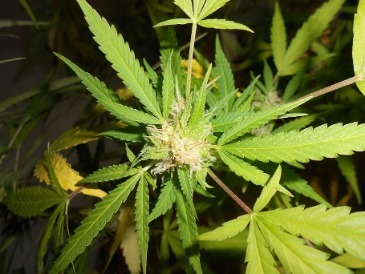
Therefore, it’s unknown whether or not cannabis or cannabinoids could be helpful. Marinol and Syndros, which include dronabinol , and Cesamet, which incorporates nabilone , are accredited by the FDA. Dronabinol and nabilone are used to treat nausea and vomiting caused by most cancers chemotherapy. Dronabinol can also be used to treat loss of urge for food and weight reduction in folks with HIV/AIDS. Cannabinoids are a bunch of drugs found in the cannabis plant.
In other words, marijuana is cannabis, but not all types of hashish are marijuana . Verywell Health makes use of solely high-quality sources, together with peer-reviewed studies, to support the details within our articles. Read our editorial process to learn extra about how we fact-check and keep our content correct, dependable, and reliable. It’s a flexible gift from Mother Nature that, when used accurately, could be the following big factor in medicinal and industrial merchandise.
Know The Science
Scientists have traditionally classified marijuana as a hallucinogen. However, not all cases of marijuana use trigger hallucinogen-like effects. Cannabis is believed to have originated in Mongolia and southern Siberia, though some keep that the plant could probably be discovered within the early years in South Asia, Afghanistan, and the Huang River Valley in northern China.
1 note
·
View note
Text
Cannabis Law in India: Navigating the Haze of Legalization
Introduction:
The legal status of cannabis, commonly known as weed, has been a subject of much debate and speculation in India. As the global perspective on cannabis evolves, with many countries relaxing regulations, it is crucial to understand the current state of cannabis laws in India. This article explores the intricate web of regulations surrounding cannabis, shedding light on its historical context, legal status, and the ongoing discourse regarding its potential legalization.

Historical Context:
Cannabis has deep roots in Indian history, with its use dating back thousands of years for medicinal, spiritual, and recreational purposes. The ancient texts of Ayurveda mention the therapeutic properties of cannabis, recognizing its potential in treating various ailments. Despite this historical association, the legal landscape surrounding cannabis in India has undergone significant changes over the years.
The Narcotic Drugs and Psychotropic Substances Act, 1985:
The turning point in India’s cannabis laws came with the enactment of the Narcotic Drugs and Psychotropic Substances Act in 1985. This legislation aimed to combat the rising drug abuse problem in the country and brought cannabis under its purview. As per the Act, the cultivation, production, manufacture, possession, sale, purchase, transport, warehousing, use, consumption, import inter-State, export inter-State, import into India, export from India, or transshipment of cannabis is prohibited, except for medical or scientific purposes and in the manner and to the extent provided by the provisions of this Act.
Legal Status of Cannabis:
As of now, cannabis is illegal for recreational use in India under the Narcotic Drugs and Psychotropic Substances Act. The law categorizes cannabis as a narcotic substance, imposing strict penalties for its possession, use, and distribution. However, the Act does allow for the cultivation, production, and manufacture of cannabis for medical and scientific purposes, subject to stringent regulations.
Despite the legal restrictions, the consumption of cannabis remains prevalent in various parts of the country, often driven by cultural and religious practices. For instance, the use of bhang, a preparation made from cannabis leaves, is an integral part of certain religious celebrations, such as Holi.
The Medical Cannabis Debate:
In recent years, there has been a growing global trend towards recognizing the medicinal benefits of cannabis. Several countries have legalized medical cannabis to varying extents, acknowledging its potential in alleviating symptoms associated with chronic illnesses, including pain, nausea, and muscle spasms.
In India, the discourse on medical cannabis has gained traction, with advocates arguing for its legalization to harness its therapeutic potential. Proponents of medical cannabis contend that its controlled and regulated use can benefit patients suffering from conditions like epilepsy, cancer, and chronic pain. However, opponents raise concerns about potential misuse and the need for stringent regulations to prevent recreational use under the guise of medical necessity.
Regional Variations and Enforcement Challenges:
India is a diverse country with varying perspectives on cannabis use. While some states have historically been more lenient in their approach, others have enforced the central laws more rigorously. This regional disparity has led to challenges in enforcing a uniform stance on cannabis use and cultivation.
The state of Uttarakhand, for example, has taken steps towards exploring the economic potential of legalizing cannabis cultivation for industrial purposes. The state government issued licenses for the cultivation of hemp, a variety of cannabis with minimal psychoactive properties, in an attempt to boost the economy and create employment opportunities.
However, such regional initiatives have faced pushback from the central government, highlighting the complexities in formulating a cohesive National Policy on Cannabis. The lack of consensus among states and the center further muddies the waters surrounding cannabis legalization in India.
International Developments:
The global landscape regarding cannabis legalization is evolving, with several countries moving towards decriminalization or complete legalization. Canada, Uruguay, and several states in the United States have legalized recreational cannabis, while many others have embraced medical cannabis.
These international developments contribute to the ongoing debate in India, as policymakers and activists assess the global trends and their potential implications for the country. The shift in global attitudes towards cannabis may influence the domestic discourse and prompt a reevaluation of India’s stance on the matter.
Conclusion:
The question of whether weed is legal in India is nuanced, reflecting the complexities inherent in navigating the legal, cultural, and economic dimensions of cannabis use. While the Narcotic Drugs and Psychotropic Substances Act continues to criminalize recreational cannabis use, the discourse on medical cannabis and the economic potential of hemp cultivation is gaining momentum.
As the global perspective on cannabis undergoes transformation, India finds itself at a crossroads, grappling with the need to balance public health concerns, cultural practices, and economic opportunities. The path forward requires a comprehensive and informed approach, taking into account the diverse perspectives within the country and the evolving international landscape. Until then, the haze surrounding the legal status of weed in India remains, awaiting clarity in the form of informed policies and regulatory frameworks.
#Is weed legal in india#cannabis#marijuana plants#how much weed is legal in india#Marijuana legal in India#NDPS Act
0 notes
Text
Eco-Friendly Blankets: Sustainable Materials and Manufacturing Practices

Introduction
In a world where environmental consciousness is gaining momentum, the significance of eco-friendly products cannot be overstated. Among these, eco-friendly blankets have emerged as a shining example of how sustainable practices can be seamlessly integrated into everyday comforts. As we tread the path towards a greener future, the concept of eco-friendly blankets takes center stage, intertwining warmth, comfort, and conscientiousness. This blog embarks on a journey to unveil the realm of eco-friendly blankets, exploring the realms of sustainable materials and innovative manufacturing practices within the blanket manufacturing industry.
Sustainable Materials for Eco-Friendly Blankets
A. Natural Fibers
In the realm of eco-friendly blankets, the embrace of natural fibers stands as a cornerstone of sustainable manufacturing. Organic cotton takes the lead, boasting numerous benefits for both the environment and those who cultivate it. By eschewing synthetic pesticides and fertilizers, organic cotton blankets not only ensure a cozy night's sleep but also contribute to a healthier planet. Alongside this, bamboo emerges as a renewable and biodegradable resource, while hemp takes the spotlight for its durability and minimal environmental impact.
B. Recycled and Repurposed Materials
Blanket manufacturer are stepping up their game by embracing the potential of recycled and repurposed materials. Recycled polyester, a transformative solution to plastic waste, is ingeniously woven into blankets that envelope you in both comfort and sustainability. Upcycled fabrics lend a creative twist to eco-friendly blankets, weaving stories of transformation and rejuvenation as discarded textiles find new life.
C. Wool and Alpaca
The charm of wool and alpaca blankets transcends mere warmth, delving deep into the realms of sustainability. Sustainable farming practices underpin the production of these blankets, fostering biodiversity and supporting local communities. Their biodegradable nature and exceptional insulation properties epitomize the harmony between comfort and environmental responsibility.
Innovative Manufacturing Practices
A. Low-Impact Dyeing
In the tapestry of sustainable manufacturing, low-impact dyeing takes center stage, painting a picture of environmental mindfulness. Natural dyes, sourced from nature's own palette, replace harmful chemicals, reducing the ecological footprint of blanket production. Additionally, water-saving techniques amplify the positive impact, conserving one of our planet's most precious resources.
B. Localized Production
As we traverse the landscape of eco-friendly blanket production, localized manufacturing emerges as a beacon of sustainability. By reducing the carbon footprint associated with transportation, localized production breathes life into both eco-friendly ideals and local economies. The artisanal touch of local craftsmanship imparts a unique character to each blanket, connecting consumers to the story behind their cozy companions.
C. Zero Waste Manufacturing
The zero waste mantra echoes through the halls of sustainable manufacturing, resonating with the principles of eco-friendly blanket production. Pattern optimization becomes an art form, minimizing fabric waste and weaving efficiency into every stitch. Recycling and repurposing production scraps close the loop, ensuring that nothing goes to waste in the pursuit of comfort.
Eco-Friendly Blanket Brands Leading the Way
A. Case Study: Company A - India’s Largest Exporter of Blankets
India's legacy as a blanket manufacturer is intertwined with a commitment to sustainability. One such trailblazer, Jindal Textiles, often hailed as India’s largest exporter of blankets and a renowned wholesale blanket supplier, has made sustainability its guiding star. By championing sustainable materials and practices, this company exemplifies how eco-friendly ideals can be woven into every fiber of production. The response from customers and the impact on the market speak volumes about the resonance of their eco-friendly approach.
B. Case Study: Company B - Trailblazing Eco-Friendly Initiatives
Jindal Textiles, a prominent wool blanket manufacturer in India, emerges as a vanguard of innovative eco-friendly initiatives, leaving an indelible mark on the blanket manufacturing landscape. From sourcing local materials to forging collaborations with environmental organizations, their commitment to sustainability extends beyond the confines of their products. Collaborations and partnerships serve as a testament to the potential for collective efforts to drive meaningful change.
Benefits of Choosing Eco-Friendly Blankets
A. Environmental Impact
Choosing eco-friendly blankets translates to tangible environmental benefits. By reducing carbon footprints and contributing to waste reduction, these blankets become instruments of change in the fight against plastic pollution and environmental degradation. Each cozy embrace becomes a step towards a cleaner and healthier planet.
B. Health and Wellness
Blankets crafted from eco-friendly materials are not only kind to the planet but also to your health. Non-toxic materials ensure improved indoor air quality, creating a safer and healthier living environment. Natural fibers like organic cotton and bamboo prioritize skin-friendliness, providing a snug and safe haven.
Tips for Consumers
A. How to Identify Eco-Friendly Blankets
Spotting eco-friendly blankets amidst a sea of choices requires a discerning eye. Seek out certifications such as Global Organic Textile Standard (GOTS) and OEKO-TEX Standard 100, ensuring that your choice aligns with your values.
B. Making Informed Choices While Shopping
Empower yourself as a conscious consumer by delving into the materials and manufacturing processes behind the blankets you consider. Transparent brands that share their sustainable journey invite you to be a part of their story.
C. Supporting Sustainable Practices in the Industry
Your choices as a consumer ripple through the industry. By choosing eco-friendly blankets and voicing your support for sustainable practices, you catalyze a shift towards responsible consumption.
Future Trends and Conclusion
The path towards a more sustainable future is illuminated by the promising trends in eco-friendly blanket manufacturing. As awareness grows and the call for responsible practices intensifies, the industry is poised for further innovation. However, the journey towards sustainability is a collective endeavor, requiring collaboration among manufacturers, consumers, and stakeholders.Share your thoughts and experiences on eco-friendly blankets. Let your voice amplify the importance of sustainable choices in everyday life. Explore blanket manufacturer like Jindal Textiles that champion eco-friendly practices, paving the way for a brighter future.
0 notes
Text
The Enigmatic Origins of Cannabis: A Central Asian Perspective

Introduction: The Geographic Conundrum of Cannabis Origin
Cannabis, a genus of flowering plants known for its myriad uses in medicine, textiles, and recreational substances, has an origin story as complex and multifaceted as the plant itself. Despite being cultivated globally today, the primary domestication and natural origin of Cannabis remain subjects of ongoing debate among scientists. The possible birthplaces span across Central Asia, South Asia, and East Asia, all regions with varying topographies and climates that have potentially contributed to the evolution of this versatile plant.
The uncertainty surrounding the exact geographical origin of Cannabis is primarily due to the shifting range of the plant during glacial-interglacial cycles over hundreds of thousands of years. As the earth warmed during the Holocene epoch about 12,000 years ago, or perhaps later with the advent of agriculture, humans likely spread Cannabis across Eurasia. Among the proposed regions, Central Asia emerges as the most plausible location for the primary origin and early evolution of Cannabis.
Historical Perspectives on Cannabis Distribution
Several historical records have attempted to pinpoint the natural distribution of Cannabis. Notably, De Candolle (1967) claimed that Cannabis occurs "wild" only south of the Caspian Sea, near the Irtysch River in Siberia, and in the Khirgiz Desert beyond Lake Baikal. He further suggested that the plant was first cultivated in southern Siberia.
The Indian Hemp Drugs Commission Report (1893–94) identified a broad area encompassing the southern Himalayan foothills from Kashmir through Nepal and northeastern India as the region of spontaneous growth. Today, the self-sown growth of Cannabis extends throughout Eastern Europe into the western and central regions of the former Soviet Union and across northern South and Southeast Asia. It also grows spontaneously in parts of Africa south of the Sahara Desert and in temperate, central North America, and as a weed in farm fields across temperary China where it has escaped from cultivation.
Nicolai Ivanovich Vavilov: A Pioneer in Understanding Cannabis Origins

The work of the famous Russian botanist Nicolai Ivanovich Vavilov has significantly contributed to our understanding of the origins of crop plants, including Cannabis. Vavilov's meticulous study of phenotypic diversity within Central Asian Cannabis offered invaluable insights into the genus. He made numerous firsthand observations and used these to differentiate between genuinely wild plants and those that had more recently escaped from cultivation.
Vavilov proposed four criteria for identifying wild Cannabis:
1. Slow and Irregular Germination: Unlike cultivated varieties, wild Cannabis seeds exhibit slow and irregular germination patterns, reflecting their adaptation to unpredictable natural environments.
2. Persistent Seed Coat: Wild Cannabis seeds retain their seed coat, or reduced perianth, which develops a camouflaging pattern. This characteristic helps the seeds blend into their environment, increasing their chances of survival.
3. Presence of Oil Glands: The seeds of wild Cannabis possess oil glands that attract various insects. These insects play a crucial role in seed dispersal, contributing to the plant's propagation.
4. Shattering Inflorescence: The inflorescence, or flower cluster, of wild Cannabis shatters and distributes the seeds, further aiding in their dispersal and ensuring the continuation of the species.
These characteristics mirror those found in wild cereals, indicating similar evolutionary paths.
Conclusion: Central Asia and the Evolution of Cannabis
While the exact geographical origin of Cannabis remains unclear due to its shifting range over millennia, Central Asia stands out as a plausible primary location. Historical records, coupled with the fieldwork and theories of botanists like Vavilov, point towards this region as a significant contributor to the early evolution of Cannabis. Vavilov's criteria for identifying wild Cannabis continue to guide researchers in their quest to understand the complex history of this versatile plant. As we unravel the mysteries of Cannabis, we gain not only insights into its past but also valuable knowledge that can guide its future cultivation and utilisation.
0 notes
Text
Eco-Friendly Practices in Indian Garment Manufacturing

Introduction
In an era where sustainable practices are paramount, the role of clothing manufacturers in India has taken center stage. The global demand for eco-conscious apparel has catalyzed a significant shift in the way the industry operates. With a keen eye on reducing environmental impact, clothing manufacturers, particularly those in India, have been at the forefront of pioneering innovative and eco-friendly practices.
This paradigm shift towards sustainable production methods is not only a testament to the commitment of Indian apparel manufacturers to the planet but also underscores their adaptability and forward-thinking approach in an ever-evolving industry. This blog delves into the commendable strides taken by clothing manufacturers in India to integrate eco-friendly practices into their production processes, revolutionizing the landscape of apparel manufacturing on a global scale.
Organic Farming for Textile Production
In recent years, the global fashion industry has witnessed a remarkable shift towards sustainable and eco-friendly practices. At the forefront of this movement are clothing manufacturers in India, who have been instrumental in pioneering innovative approaches to minimize their environmental footprint. One such transformative practice that has gained considerable traction is the adoption of organic farming for textile production.
Clothing manufacturers, especially those based in India, have recognized the intrinsic value of organic farming in the creation of sustainable apparel. Organic farming, characterized by the avoidance of synthetic chemicals and genetically modified organisms (GMOs), aligns perfectly with the ethos of eco-conscious production. This approach prioritizes the health of both the environment and the consumer, as it significantly reduces the use of harmful pesticides and fertilizers, which often find their way into soil and water systems.
By incorporating organic farming practices into their supply chains, clothing manufacturers in India are not only fostering a healthier ecosystem but also supporting local communities. This approach promotes biodiversity, maintains soil health, and conserves water resources, creating a harmonious balance between nature and industry.
Apparel manufacturers in India have shown commendable dedication to sourcing organic fibers like cotton, hemp, and bamboo. These materials, cultivated through environmentally friendly techniques, result in textiles that are not only superior in quality but also free from the residues of synthetic chemicals. This translates to clothing that is not only soft and comfortable but also safe for the skin and less likely to cause allergies or sensitivities.
In essence, the integration of organic farming practices into textile production is a testament to the forward-thinking mindset of clothing manufacturers in India. Their commitment to sustainable sourcing and production methods is not only reshaping the fashion landscape but also setting a commendable standard for the global apparel industry as a whole.
Waste Reduction and Recycling Efforts
Sustainable clothing manufacturers have emerged as pioneers in the fashion industry, demonstrating an unwavering commitment to minimizing waste and promoting responsible consumption. Recognizing the environmental toll of textile waste, these manufacturers have implemented innovative strategies to reduce their ecological footprint.
One of the primary focuses of sustainable clothing manufacturers is the concept of ‘zero-waste’ production. This entails meticulous pattern-making and fabric utilization techniques to ensure that every inch of material is used, leaving no scraps behind. By optimizing the cutting process and designing with efficiency in mind, these manufacturers drastically reduce the amount of textile waste generated during production.
Moreover, recycling efforts play a pivotal role in the sustainability initiatives of clothing manufacturers. By repurposing post-consumer textiles or utilizing recycled materials in their production processes, these manufacturers actively contribute to the circular economy. This not only diverts textiles from landfills but also diminishes the demand for virgin materials, thus conserving valuable natural resources.
In addition to internal waste reduction measures, sustainable clothing manufacturers often engage in extended producer responsibility (EPR) programs. These initiatives involve the responsible management of end-of-life products, ensuring that garments are either recycled, upcycled, or properly disposed of. By taking on the responsibility for the full lifecycle of their products, these manufacturers demonstrate a commitment to environmental stewardship.
Furthermore, many sustainable clothing manufacturers actively engage with consumers to promote responsible consumption habits. They educate their customers on the importance of proper garment care, repair, and recycling. By fostering a culture of longevity and mindfulness, these manufacturers empower consumers to make environmentally conscious choices.
In essence, sustainable clothing manufacturers are driving a paradigm shift in the fashion industry, proving that it is not only possible but imperative to minimize waste and promote recycling. Through their dedication to innovative production techniques and responsible consumer engagement, these manufacturers are setting a new standard for environmentally-conscious apparel production. Their efforts not only benefit the planet but also inspire a more sustainable and mindful approach to fashion consumption.
Energy-Efficient Manufacturing Processes
Denim manufacturers, sustainable clothing manufacturers, and sportswear manufacturers are at the forefront of a sustainable revolution in the fashion industry. Recognizing the significant environmental impact of energy consumption in production, these forward-thinking companies are pioneering the adoption of energy-efficient manufacturing processes.
One of the key strategies employed by these manufacturers is the integration of cutting-edge technologies that optimize energy usage. Advanced machinery and production lines are designed to operate with higher energy efficiency ratings, reducing overall consumption. Additionally, these manufacturers often invest in renewable energy sources such as solar and wind power to further diminish their reliance on non-renewable resources.
Furthermore, sustainable clothing manufacturers have taken innovative steps to re-imagine traditional manufacturing practices. Through the implementation of lean manufacturing techniques and the utilization of smart technology, they have streamlined production processes to be more energy-efficient. By minimizing waste and maximizing resource utilization, these manufacturers not only reduce their environmental footprint but also enhance overall operational efficiency.
Denim manufacturers, in particular, have been leaders in implementing sustainable dyeing and finishing processes. The traditionally resource-intensive denim production has undergone a transformation with the adoption of laser technology, which significantly reduces water and energy consumption. By utilizing these innovative techniques, denim manufacturers are setting new standards for eco-conscious apparel production.
Sportswear manufacturers, too, have embraced energy-efficient practices. From utilizing lightweight and sustainable materials to employing innovative manufacturing methods like 3D knitting, they strive to optimize energy usage while maintaining the highest performance standards. These efforts not only benefit the environment but also result in products that align with the evolving demands of conscious consumers.
In conclusion, denim manufacturers, sustainable clothing manufacturers, and sportswear manufacturers are exemplifying a commitment to sustainability through their adoption of energy-efficient manufacturing processes. By integrating cutting-edge technologies, investing in renewable energy, and re-imagining traditional practices, these industry leaders are not only reducing their environmental impact but also setting a new standard for responsible and innovative apparel production.
Water Conservation in Garment Manufacturing
Water conservation has become a paramount concern within the garment manufacturing industry, prompting apparel manufacturers to take decisive action. Sustainable clothing manufacturers, in particular, have emerged as pioneers in implementing innovative strategies to minimize water usage in their production processes.
Recognizing the water-intensive nature of textile production, sustainable clothing manufacturers are actively seeking alternative methods to reduce their environmental impact. One of the key approaches involves the adoption of closed-loop systems in dyeing and finishing processes. These systems efficiently capture, filter, and reuse water, significantly reducing overall consumption and mitigating the release of harmful chemicals into waterways.
Moreover, sustainable clothing manufacturers prioritize the use of low-impact dyeing techniques that require less water compared to traditional methods. These techniques not only reduce water usage but also minimize pollution by using eco-friendly dye compounds. Additionally, many manufacturers are exploring dyeing processes that utilize plant-based or natural dyes, further aligning with their commitment to sustainable practices.
Apparel manufacturers are also investing in state-of-the-art machinery and technologies designed to optimize water usage. Advanced equipment allows for precise control over water flow and temperature, ensuring that only the necessary amount is used in each stage of production. By leveraging technology, manufacturers can achieve higher levels of efficiency while significantly reducing their water footprint.
Beyond the production floor, sustainable clothing manufacturers are actively engaged in community initiatives to address water conservation. This can include partnering with local organizations on water stewardship projects, supporting reforestation efforts, and advocating for responsible water management practices in the regions where they operate.
In conclusion, apparel manufacturers, especially sustainable clothing manufacturers, are spearheading efforts to conserve water in garment manufacturing. Through the adoption of closed-loop systems, low-impact dyeing techniques, advanced machinery, and community engagement, they are demonstrating a steadfast commitment to sustainable and responsible production practices. These initiatives not only benefit the environment but also serve as a testament to the industry’s capacity for positive change.
Conclusion
Water conservation has become a critical priority for clothing manufacturers, including denim and activewear manufacturers. These industry leaders are actively implementing strategies to minimize water usage in their production processes, recognizing the significant environmental impact of textile manufacturing.
Denim manufacturers, known for historically water-intensive production, have been at the forefront of sustainable dyeing techniques. Advanced methods, such as laser technology and ozone treatments, significantly reduce water consumption in the dyeing and finishing stages. By embracing these innovations, denim manufacturers are revolutionizing their processes while preserving precious water resources.
Activewear manufacturers, aiming for high-performance products, are also making strides in water conservation. They employ cutting-edge technologies like 3D knitting, which not only optimizes energy usage but also reduces the need for extensive water in the manufacturing process. Additionally, the use of sustainable, quick-drying materials minimizes the water required during garment care.
Furthermore, both denim and activewear manufacturers are investing in closed-loop systems to capture and recycle water used in various production stages. These systems efficiently filter and reuse water, significantly decreasing overall consumption while maintaining the integrity of the final product. Through these initiatives, clothing manufacturers, denim manufacturers, and activewear manufacturers are collectively demonstrating a commitment to sustainable practices that prioritize the responsible use of this invaluable resource.
0 notes